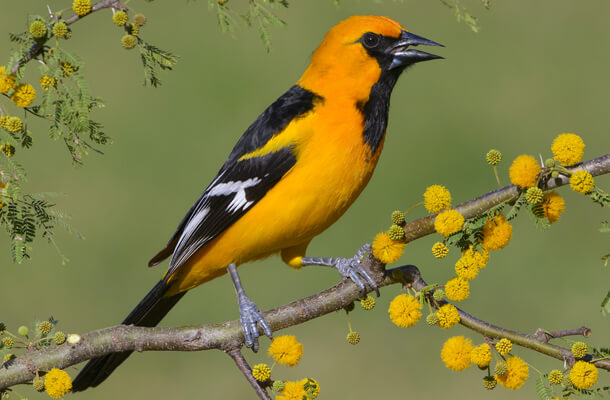Keep the Santa Ana National Wildlife Refuge Intact
Contact: Jennifer Howard, Director of Public Relations, 202-888-7472
(Washington, D.C., July 21, 2017) American Bird Conservancy (ABC) is very concerned that portions of a border wall might be built through the Santa Ana National Wildlife Refuge in Texas. This week, news outlets reported that federal officials and private contractors have been surveying portions of the refuge for construction. ABC strongly opposes any action that would put the conservation integrity of these irreplaceable public lands at risk.

Altamira Oriole is one of some 400 bird species found at the Santa Ana National Wildlife Refuge. Photo by Tim Zurowski/Shutterstock
“The lower Rio Grande is a national treasure for birds,” said Michael J. Parr, President of ABC. “National wildlife refuges are part of the public trust, and birds in this area depend on habitat immediately adjacent to the Rio Grande itself. This area consists of a narrow sliver of riparian woodland and oxbow lakes, and this makes it extremely vulnerable to disturbance.”
ABC is contacting federal authorities to express its concerns and to ask them to halt any plans that would jeopardize the Santa Ana National Wildlife Refuge. Other national and local groups, including the American Birding Association, have been speaking out on behalf of the refuge this week.
Often called the crown jewel of the United States' National Wildlife Refuge System, Santa Ana protects 2,088 acres of unique habitat along the banks of the Rio Grande River. The refuge was created in 1943 to protect migratory birds, and remains one of the top birding destinations in the United States. Some 400 bird species can be seen here, including Altamira Oriole (shown), Groove-billed Ani, and many migratory warblers and raptors, along with an abundance of other wildlife.
ABC urges the public to contact their members of Congress and urge them to oppose construction in the Santa Ana National Wildlife Refuge or any other lands designated as protected areas for wildlife.
###
American Bird Conservancy is dedicated to conserving birds and their habitats throughout the Americas. With an emphasis on achieving results and working in partnership, we take on the greatest problems facing birds today, innovating and building on rapid advancements in science to halt extinctions, protect habitats, eliminate threats, and build capacity for bird conservation.


















































